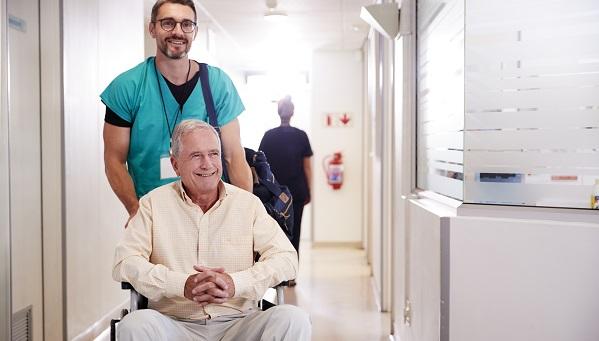3M TAVR: Minimalist TAVI Pathway Saves Money
The approach, which has already been adopted at many centers, chopped off an estimated $11,000 in costs in the first 30 days.

MIAMI, FL—The minimalist approach vetted by the 3M TAVR study resulted in big cost savings in the first 30 days after TAVI among intermediate-risk patients, driven by shorter procedures and stays in the ICU and hospital, an economic analysis shows.
Compared with patients included in the S3i registry, which enrolled similar patients at a similar point in time, those treated within the 3M pathway had significantly lower costs during the initial hospitalization—an average of $10,843 less, Neel Butala, MD, MBA (Massachusetts General Hospital, Boston), reported here at TVT 2021 last week.
Costs were comparable in the two groups between discharge and 30 days, and when everything was added up, there was a total savings of $11,305 with the minimalist approach. At the same time, there was no penalty in terms of clinical outcomes.
“These findings suggest that continued efforts to expand the use of both the minimalist approach and a streamlined TAVR clinical pathway are warranted and are likely to substantially improve the cost-effectiveness of this procedure,” Butala concluded.
As multiple speakers alluded to during a panel discussion following the presentation, elements of the minimalist TAVI approach have been widely adopted in recent years.
David Cohen, MD (St. Francis Hospital and Heart Center, Roslyn, NY/Cardiovascular Research Foundation, New York, NY), a 3M TAVR investigator, said, “We don’t know how much of this was the 3M pathway, how much was motivated investigators, how much of it was a lot of things. What is clear is what was achieved in 3M is what’s happening today. So that’s really what we’re kind of comparing: what are we doing today versus what we were doing 4 years ago.”
Cutting Hospitalization Costs
Centers have been exploring ways to streamline the TAVI procedure to get patients out of the hospital faster, and the 3M TAVR study put one approach—the Vancouver 3M (multidisciplinary, multimodality, but minimalist) pathway—to the test across 13 centers in Canada and the United States. The results, published in 2019, show that 80.1% of patients were discharged the next day after the procedure, with “excellent safety and efficacy outcomes.”
Butala reported the results of an economic analysis exploring the cost savings associated with use of the pathway from the perspective of the US healthcare system. He and his colleagues propensity-matched 351 patients from the 3M TAVR study with an equal number of patients who underwent transfemoral TAVI as part of the S3i registry embedded in the PARTNER 2A trial and who could be linked to data from the US Centers for Medicare & Medicaid Services. After matching, mean patient age was 82 and the mean STS score (5.2 to 5.3) was within the intermediate range.
Basically you want to get in, get out before they even notice you did anything. And then if you did that right, everything comes out perfect. David Cohen
In the hospital, there were no differences between the 3M and S3i patients in terms of clinical outcomes, including death (0.9% vs 0.3%), stroke (0.6% vs 2.0%), MI (0 vs 0.3%), and repeat valve procedures (0.6% vs 0; P = NS for all). The 3M patients, however, were more likely to be discharged home (96.3% vs 88.9%) and less likely to be discharged to a rehabilitation/skilled nursing/extended care facility (1.4% vs 10.8%).
There were no differences in clinical outcomes between discharge and 30 days either, which indicates that “there’s no clinical penalty” with the minimalist approach, Butala said.
In terms of resource use, the 3M patients had shorter procedures (total room time 115 vs 180 min; P < 0.001) and shorter stays in the hospital (1.6 vs 3.9 days; P < 0.001), including less time spent in the ICU. Along with some savings in physician costs, the differences translated in a significantly lower overall hospitalization cost in the 3M group ($45,595 vs $56,438; P < 0.001).
The money spent between discharge and 30 days was numerically but not significantly lower in the 3M versus S3i group ($3,830 vs $4,291; P = 0.358), though the 3M patients spent, on average, fewer days in rehab or skilled nursing facilities (0.4 vs 1.4 days per patient; P < 0.0001). “And this just highlights that there’s no catch-up in costs despite an initial minimalist approach,” Butala said.
A prior analysis of the S3i registry estimated that TAVI saved about $9,000 compared with SAVR. If the additional savings of $11,000 observed in the current study is added to that, it indicates that TAVI using a minimalist approach shaves about $20,000 off the cost of treatment for an intermediate-risk patient relative to surgery, Butala said.
Patient Experience Better, Too
During the panel discussion, Tamim Nazif, MD (NewYork-Presbyterian/Columbia University Irving Medical Center, New York), said there were a couple of limitations to consider. First, 3M TAVR enrolled a heavily selected population of patients deemed suitable for expedited discharge, “so it may not be that rolling out the 3M pathway broadly to every patient results in the same degree of savings,” he commented.
And second, 3M TAVR was mostly conducted in Canada, whereas S3i largely focused on US patients, he said, questioning whether differences in practice might have had an impact.
But another commenter, Bernard Prendergast, MD (St Thomas' Hospital, London, England), brought the conversation around to how earlier discharge affects patients. “The focus of the analysis is on financial elements and cost, but you need to remember that the patient experience is enhanced by a short spell in hospital. So that’s a very positive impact of these facilitated pathways,” he said. Prendergast added, too, that discharging patients more rapidly means that more cases can be performed at a given center, an important consideration in places like the United Kingdom that have waiting lists for treatment.
Cohen noted that a 2-week assessment of quality of life was performed in the 3M TAVR study, and said those data show that much of the improvement patients experienced occurred in that initial time period.
“The quicker we can get these people out of the hospital, the better they do, especially in the older, the sicker, the intermediate- and the high-risk patients,” Cohen said. “My message to everybody that I teach TAVR [to] is the goal here is a sneak attack. Basically you want to get in, get out before they even notice you did anything. And then if you did that right, everything comes out perfect.”
Todd Neale is the Associate News Editor for TCTMD and a Senior Medical Journalist. He got his start in journalism at …
Read Full BioSources
Butala N. Economics of minimalist TAVR: the 3M TAVR economic study. Presented at: TVT 2021. July 22, 2021. Miami, FL.
Disclosures
- The study was funded by a research grant from Edwards Lifesciences.
- Butala reports no relevant conflicts of interest.
- Cohen reports grant support/research contracts from Abbott Vascular, Ancora Heart, Boston Scientific, Corvia, Edwards Lifesciences, Medtronic, Svelte, Volcano Corporation, and V-Wave Medical; and consulting fees/honoraria/speaking fees from Abbott, Boston Scientific, and Medtronic.




Comments